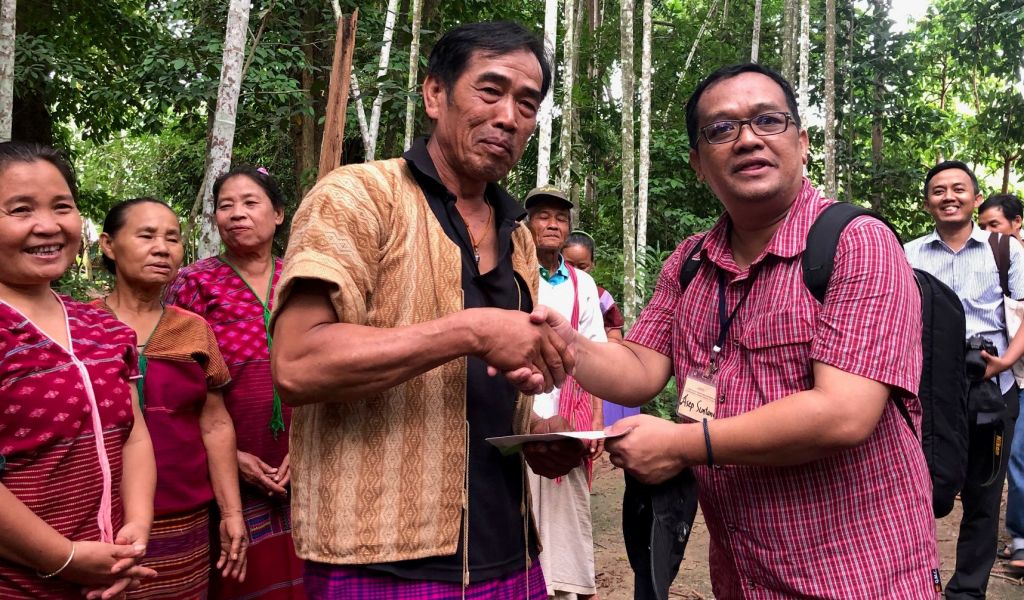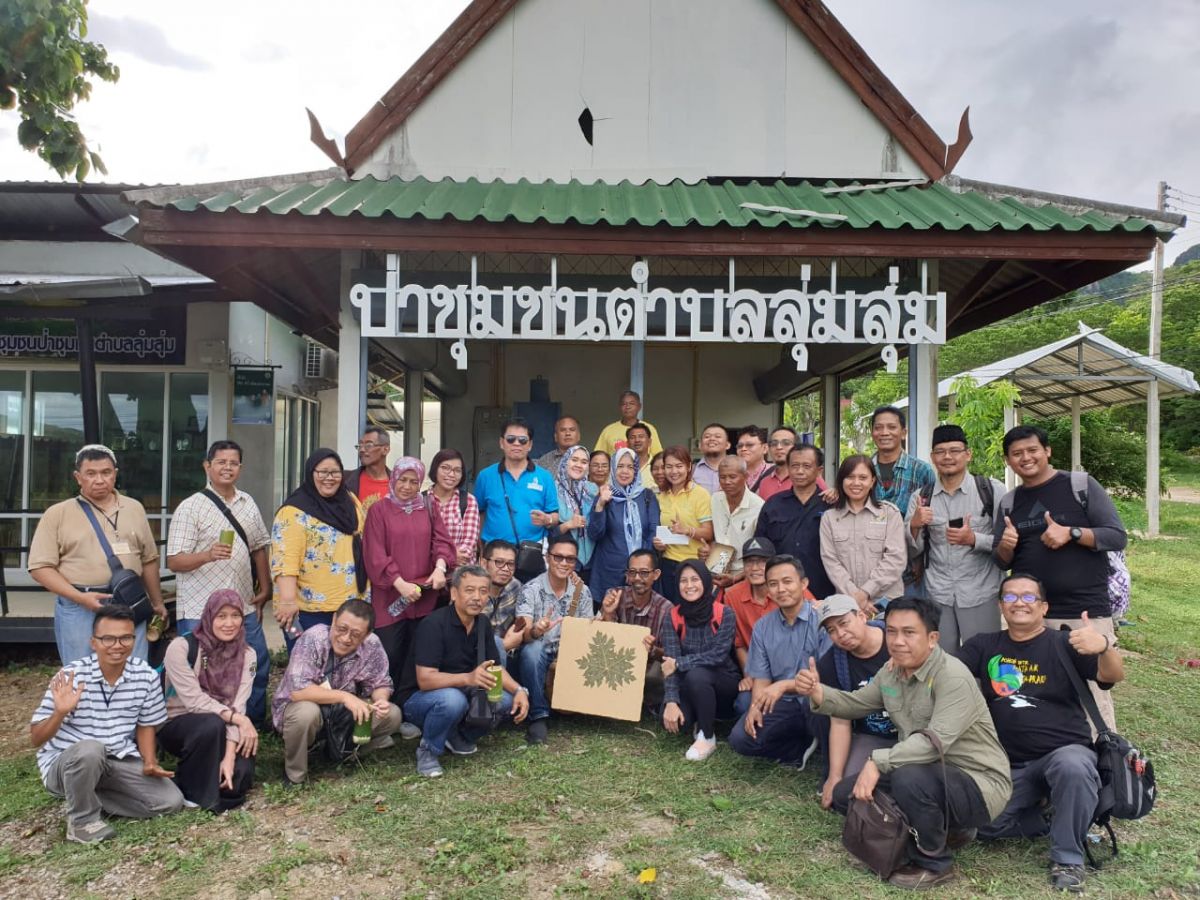Lessons from the field: A study visit of Indonesian foresters to Thailand

Thirty Indonesian official foresters from the Ministry of Environment and Forestry visited three provinces in Thailand from 17-21 June 2019 to learn about community forest development in Thailand through field studies organized by The Center for People and Forests (RECOFTC).
For five days, participants shared their experiences about community forestry management, public private partnerships, small business enterprises, and collaboration among farmers and the government through social forestry.
“I am so excited in getting to know more on the public private partnership in here,” said Dadan Kuswardhana, head of the Forest Management Unit in Batu Lanteh, West Nusa Tenggara Province in Indonesia. “The system is so different, yet working so well for both sides.”
RECOFTC’s program encouraged participants to learn from three community forestry case studies which they explored first-hand. These included Baan Huai Hin Dum Community Forest in Suphanburi Province, Baan Samakkee Dham Community Forest in Kanchanaburi Province and Baan Huai Sapan Samakkee Community Forest in Kanchanaburi Province.
At Baan Huai Hin Dum Community Forest, participants focused on customary forest management practices, preservation of Karen ethnic identity and empowerment of women and girls. Here, members of the Thai Karen ethnic group have participated in community forestry and rotational farming at Phu Toei National Park. Over the years, the Karen people fled war in Myanmar and settled in Thailand. Historically, their livelihoods depended on rotational farming. Now, the Karen people cultivate a variety of products including textiles, bamboo shoots, rice and vegetables.
“In this area, the Karen people’s customary rights are not legally recognized by law," said Dadan Kuswardhana. “However, in practice, there is a verbal agreement that allows them to cultivate in the National Park as long as they follow certain rules such as no use of pesticides or heavy machinery. It is interesting to know that community would respect to just a verbal agreement as it hasn’t happened in my country.”
In addition to the informal verbal agreement, there is formal communication between the Karen people and Phu Toei National Park representatives. Karen community representatives take part in monthly meetings with the Park Advisory Committee to decide on park management issues.

At Baan Samakkee Dham Community Forest, participants learned about community forest based enterprise development. The Community Forest Enterprise receives funds from government initiatives to build new facilities. While the local products and partnerships are similar to those at the Baan Huai Sapan Samakkee Community Forest, this community embraces an international partnership with Japan to help maintain its forests.
During the final field visit to Huai Sapan Samakkee Community Forest the participants explored community forest management through partnerships and networks. Here, community forestry requires the collaboration among parties including the Siam Cement Group, Rajabhat University in Kanchanaburi, the provincial forestry office, the local temple and school, the Sub-district Office and community representatives.
Asep Sugih Suntana, the National Project Manager of Forest Investment Program II at the Ministry of Environment and Forestry, praised the site visit program.
“This program is very useful and informative,” he said. “ I have learned a lot and I think it is very helpful because when you are stuck in your office with references in your hand, you don’t really get to learn what lives are like in the community forests in Thailand, and how they make their partnership run so well.”

The trip highlighted the important role of stakeholders in the development of Thailand’s community forestry-- from government agencies, to academic institutions, to private sector actors, to local communities. The participants assessed the key factors that allow for effective community forest management and forest based enterprise development. These often include participatory policies, mutually beneficial institutional arrangements and institutional financial support. In the end it was clear that each of the participants was eager to use these experiences to help their own communities in Indonesia.
“I believe each one of us has experienced the explicit and tacit knowledge from this study visit,” said Suntana. “We have so much to share back in our home and apply the key learnings in our own. In addition, combining the experience from the Thai study visit with traditional knowledge we have learned in Indonesia, we might come up with new approaches to support community forestry in the form of new knowledge.”

